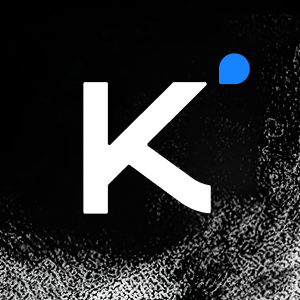探索REMarkerClusterer:安装与使用指南
在地图应用开发中,处理大量标记(markers)的显示和交互是一项挑战。REMarkerClusterer 是一个开源项目,旨在解决这个问题,通过为iOS应用创建和管理不同缩放级别的标记集群,让地图上的标记管理变得更加高效。本文将详细介绍如何安装和使用REMarkerClusterer,帮助你轻松集成这个强大的功能到你的应用中。
安装前准备
在开始安装REMarkerClusterer之前,确保你的开发环境满足以下要求:
- 系统和硬件要求:Xcode 4.6 或更高版本,Apple LLVM 编译器,iOS 5.0 或更高版本的设备。
- 必备软件和依赖项:MapKit 和 CoreLocation 框架需要被包含在你的项目中。如果你的项目尚未使用ARC(自动引用计数),你需要添加编译器标志
-fobjc-arc。
安装步骤
下载开源项目资源
要开始使用REMarkerClusterer,首先需要从以下地址克隆或下载项目资源:
https://github.com/romaonthego/REMarkerClusterer.git
安装过程详解
以下是通过CocoaPods安装REMarkerClusterer的详细步骤:
-
安装CocoaPods:如果你还没有安装CocoaPods,可以通过以下命令进行安装:
$ [sudo] gem install cocoapods $ pod setup -
配置Podfile:在你的Xcode项目目录中,创建一个名为Podfile的文件,并添加以下内容:
platform :ios, '6.0' pod 'REMarkerClusterer', '~> 2.3.1' -
执行Pod安装:在Podfile所在的目录下运行以下命令:
$ pod install -
打开项目:使用Xcode打开生成的
.xcworkspace文件,而不是通常的项目文件。
如果安装过程中遇到问题,通常是因为Git版本不符合CocoaPods的要求。确保你使用的是Git版本1.8.0或更高,可以通过运行git --version来检查。
基本使用方法
加载开源项目
在你的项目中,首先需要引入REMarkerClusterer的头文件:
#import "REMarkerClusterer.h"
然后创建一个MKMapView实例,并将其添加到视图:
self.mapView = [[MKMapView alloc] initWithFrame:self.view.bounds];
[self.mapView setRegion:MKCoordinateRegionMake(CLLocationCoordinate2DMake(37.786996, -97.440100), MKCoordinateSpanMake(0.03863, 0.03863)) animated:YES];
[self.view addSubview:self.mapView];
创建集群
创建一个REMarkerClusterer实例,并将其与地图视图关联:
self.clusterer = [[REMarkerClusterer alloc] initWithMapView:self.mapView delegate:self];
你可以根据需要设置网格大小和其他配置选项。
添加标记
接下来,你可以从数据源中读取标记数据,并将它们添加到集群中:
NSDictionary *data = [NSDictionary dictionaryWithContentsOfFile:[[NSBundle mainBundle] pathForResource:@"Points" ofType:@"plist"]];
[data[@"Points"] enumerateObjectsUsingBlock:^(NSDictionary *dictionary, NSUInteger idx, BOOL *stop) {
REMarker *marker = [[REMarker alloc] init];
marker.markerId = [dictionary[@"id"] integerValue];
marker.coordinate = CLLocationCoordinate2DMake([dictionary[@"latitude"] floatValue], [dictionary[@"longitude"] floatValue]);
marker.title = [NSString stringWithFormat:@"One item <id: %i>", idx];
marker.userInfo = @{@"index": @(idx)};
[self.clusterer addMarker:marker];
}];
更新地图显示
最后,调用clusterize方法来创建集群,并使用zoomToAnnotationsBounds方法来调整地图视野以显示所有标记和集群:
[self.clusterer clusterize:NO];
[self.clusterer zoomToAnnotationsBounds:self.clusterer.markers];
结论
通过上述步骤,你已经成功集成了REMarkerClusterer到你的iOS项目中。接下来,你可以根据项目的需求,进一步调整和优化集群的显示和行为。更多关于REMarkerClusterer的信息和使用技巧,可以参考项目的官方文档和相关教程。实践是学习的关键,尝试不同的配置和场景,以充分发挥这个开源项目的能力。
 AutoGLM-Phone-9BAutoGLM-Phone-9B是基于AutoGLM构建的移动智能助手框架,依托多模态感知理解手机屏幕并执行自动化操作。Jinja00
AutoGLM-Phone-9BAutoGLM-Phone-9B是基于AutoGLM构建的移动智能助手框架,依托多模态感知理解手机屏幕并执行自动化操作。Jinja00 Kimi-K2-ThinkingKimi K2 Thinking 是最新、性能最强的开源思维模型。从 Kimi K2 开始,我们将其打造为能够逐步推理并动态调用工具的思维智能体。通过显著提升多步推理深度,并在 200–300 次连续调用中保持稳定的工具使用能力,它在 Humanity's Last Exam (HLE)、BrowseComp 等基准测试中树立了新的技术标杆。同时,K2 Thinking 是原生 INT4 量化模型,具备 256k 上下文窗口,实现了推理延迟和 GPU 内存占用的无损降低。Python00
Kimi-K2-ThinkingKimi K2 Thinking 是最新、性能最强的开源思维模型。从 Kimi K2 开始,我们将其打造为能够逐步推理并动态调用工具的思维智能体。通过显著提升多步推理深度,并在 200–300 次连续调用中保持稳定的工具使用能力,它在 Humanity's Last Exam (HLE)、BrowseComp 等基准测试中树立了新的技术标杆。同时,K2 Thinking 是原生 INT4 量化模型,具备 256k 上下文窗口,实现了推理延迟和 GPU 内存占用的无损降低。Python00 GLM-4.6V-FP8GLM-4.6V-FP8是GLM-V系列开源模型,支持128K上下文窗口,融合原生多模态函数调用能力,实现从视觉感知到执行的闭环。具备文档理解、图文生成、前端重构等功能,适用于云集群与本地部署,在同类参数规模中视觉理解性能领先。Jinja00
GLM-4.6V-FP8GLM-4.6V-FP8是GLM-V系列开源模型,支持128K上下文窗口,融合原生多模态函数调用能力,实现从视觉感知到执行的闭环。具备文档理解、图文生成、前端重构等功能,适用于云集群与本地部署,在同类参数规模中视觉理解性能领先。Jinja00 HunyuanOCRHunyuanOCR 是基于混元原生多模态架构打造的领先端到端 OCR 专家级视觉语言模型。它采用仅 10 亿参数的轻量化设计,在业界多项基准测试中取得了当前最佳性能。该模型不仅精通复杂多语言文档解析,还在文本检测与识别、开放域信息抽取、视频字幕提取及图片翻译等实际应用场景中表现卓越。00
HunyuanOCRHunyuanOCR 是基于混元原生多模态架构打造的领先端到端 OCR 专家级视觉语言模型。它采用仅 10 亿参数的轻量化设计,在业界多项基准测试中取得了当前最佳性能。该模型不仅精通复杂多语言文档解析,还在文本检测与识别、开放域信息抽取、视频字幕提取及图片翻译等实际应用场景中表现卓越。00 GLM-ASR-Nano-2512GLM-ASR-Nano-2512 是一款稳健的开源语音识别模型,参数规模为 15 亿。该模型专为应对真实场景的复杂性而设计,在保持紧凑体量的同时,多项基准测试表现优于 OpenAI Whisper V3。Python00
GLM-ASR-Nano-2512GLM-ASR-Nano-2512 是一款稳健的开源语音识别模型,参数规模为 15 亿。该模型专为应对真实场景的复杂性而设计,在保持紧凑体量的同时,多项基准测试表现优于 OpenAI Whisper V3。Python00 GLM-TTSGLM-TTS 是一款基于大语言模型的高质量文本转语音(TTS)合成系统,支持零样本语音克隆和流式推理。该系统采用两阶段架构,结合了用于语音 token 生成的大语言模型(LLM)和用于波形合成的流匹配(Flow Matching)模型。 通过引入多奖励强化学习框架,GLM-TTS 显著提升了合成语音的表现力,相比传统 TTS 系统实现了更自然的情感控制。Python00
GLM-TTSGLM-TTS 是一款基于大语言模型的高质量文本转语音(TTS)合成系统,支持零样本语音克隆和流式推理。该系统采用两阶段架构,结合了用于语音 token 生成的大语言模型(LLM)和用于波形合成的流匹配(Flow Matching)模型。 通过引入多奖励强化学习框架,GLM-TTS 显著提升了合成语音的表现力,相比传统 TTS 系统实现了更自然的情感控制。Python00 Spark-Formalizer-X1-7BSpark-Formalizer 是由科大讯飞团队开发的专用大型语言模型,专注于数学自动形式化任务。该模型擅长将自然语言数学问题转化为精确的 Lean4 形式化语句,在形式化语句生成方面达到了业界领先水平。Python00
Spark-Formalizer-X1-7BSpark-Formalizer 是由科大讯飞团队开发的专用大型语言模型,专注于数学自动形式化任务。该模型擅长将自然语言数学问题转化为精确的 Lean4 形式化语句,在形式化语句生成方面达到了业界领先水平。Python00